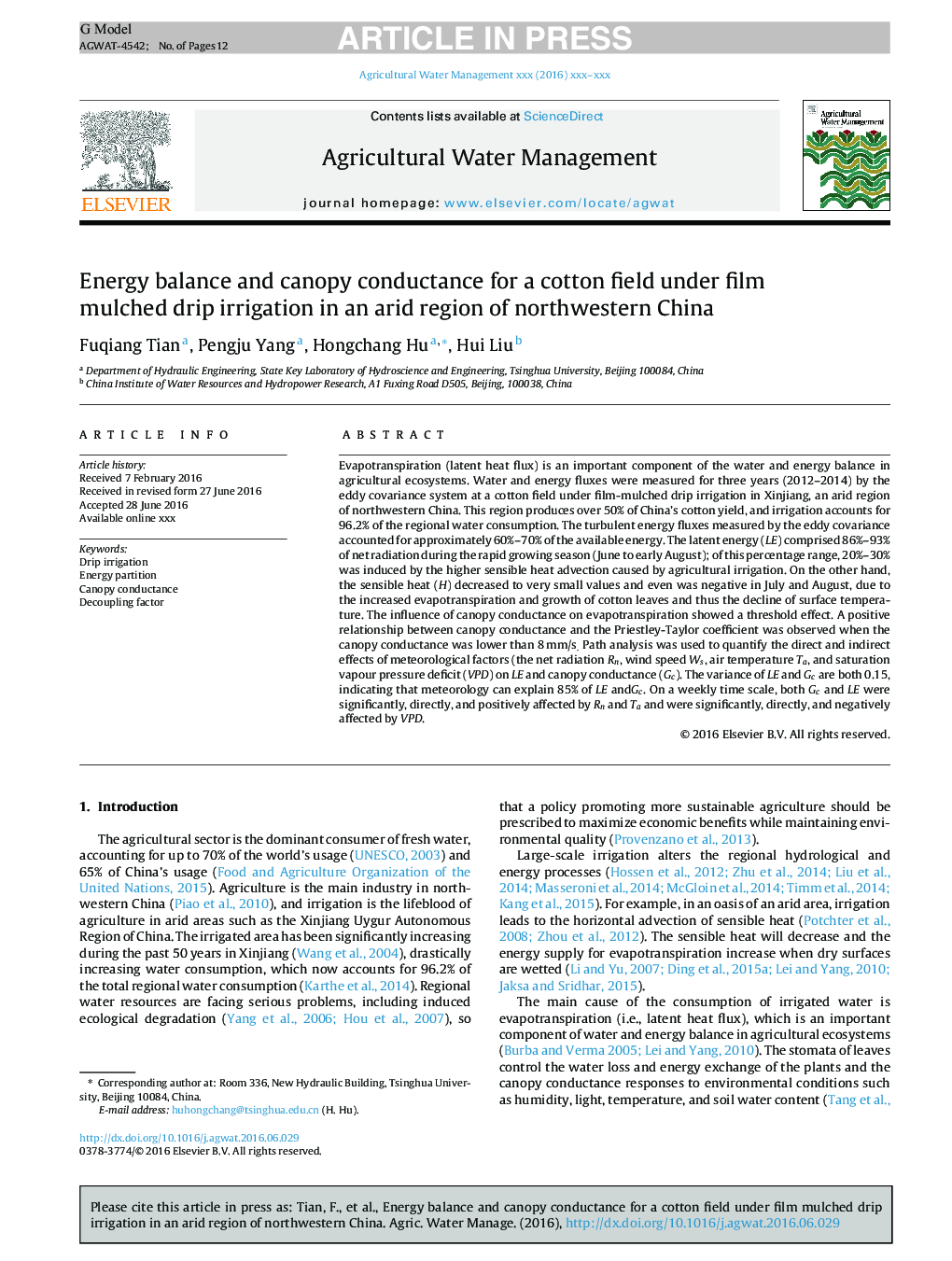| Article ID | Journal | Published Year | Pages | File Type |
|---|---|---|---|---|
| 5758596 | Agricultural Water Management | 2017 | 12 Pages |
Abstract
Evapotranspiration (latent heat flux) is an important component of the water and energy balance in agricultural ecosystems. Water and energy fluxes were measured for three years (2012-2014) by the eddy covariance system at a cotton field under film-mulched drip irrigation in Xinjiang, an arid region of northwestern China. This region produces over 50% of China's cotton yield, and irrigation accounts for 96.2% of the regional water consumption. The turbulent energy fluxes measured by the eddy covariance accounted for approximately 60%-70% of the available energy. The latent energy (LE) comprised 86%-93% of net radiation during the rapid growing season (June to early August); of this percentage range, 20%-30% was induced by the higher sensible heat advection caused by agricultural irrigation. On the other hand, the sensible heat (H) decreased to very small values and even was negative in July and August, due to the increased evapotranspiration and growth of cotton leaves and thus the decline of surface temperature. The influence of canopy conductance on evapotranspiration showed a threshold effect. A positive relationship between canopy conductance and the Priestley-Taylor coefficient was observed when the canopy conductance was lower than 8Â mm/s. Path analysis was used to quantify the direct and indirect effects of meteorological factors (the net radiation Rn, wind speed Ws, air temperature Ta, and saturation vapour pressure deficit (VPD) on LE and canopy conductance (Gc). The variance of LE and Gc are both 0.15, indicating that meteorology can explain 85% of LE andGc. On a weekly time scale, both Gc and LE were significantly, directly, and positively affected by Rn and Ta and were significantly, directly, and negatively affected by VPD.
Related Topics
Life Sciences
Agricultural and Biological Sciences
Agronomy and Crop Science
Authors
Fuqiang Tian, Pengju Yang, Hongchang Hu, Hui Liu,
